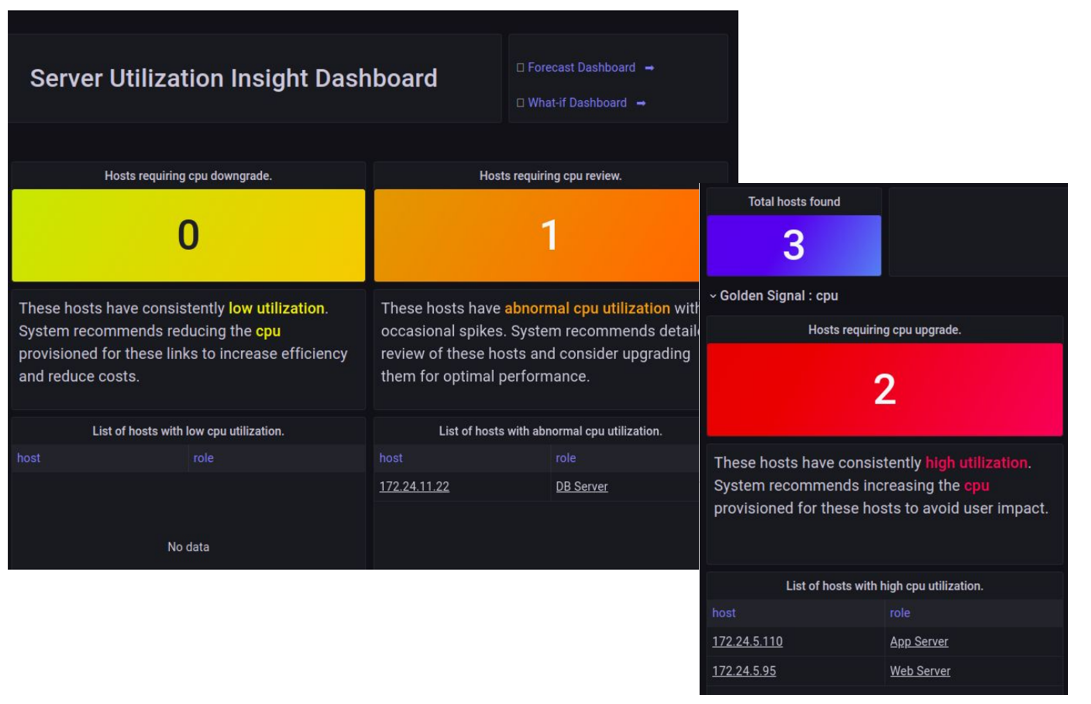Averting Code Catastrophe with VuNet’s Capacity Forecasting
- Nov 21, 2023
- Blogs
- 5 min read
A deep dive into the capacity planning capabilities of vuCoreML, which help you stay ahead of your server shenanigans!
Alex is a lead Cloud/DevOps engineer in an online marketplace that connects merchants and customers and is responsible for resolving critical issues that plagues the platform. He is puzzled when performance problems start cropping up out of nowhere – the system frequently crashes under heavy loads, leaving the merchants frustrated and the customer’s wallet undisturbed.
Alex knew that capacity forecasting lay at the centre of resolving such issues. It involved provisioning IT resources to handle the increasing workloads. He began by analyzing the marketplace’s current infrastructure and system architecture. He gathered data on historical usage patterns, peak loads, and growth projections. Using this information, he built mathematical models to simulate the behaviour of the system under different load scenarios.
As Alex delved deeper into his analysis, he started discovering alarming trends. The marketplace’s user base is growing at an unprecedented rate, and if left unchecked, the system will soon become overwhelmed by the mounting demands. The existing infrastructure is inadequate to handle the projected load.
Armed with this knowledge, Alex devises a meticulous plan to address the issue. He proposes scaling up the infrastructure by adding more servers, increasing storage capacity, and optimizing the system’s database queries. Additionally, he suggests implementing load-balancing mechanisms to distribute traffic evenly across multiple servers.
As they begin to implement these changes, the marketplace gradually transforms. Slowly but surely, the system becomes more robust and capable of handling the growing number of users and their transactions. The crashes and performance issues that once plagued the marketplace became a thing of the past.
The merchants rejoiced as their businesses flourished, and the customers experienced seamless and reliable transactions. The marketplace’s success underlines the critical role of capacity forecasting in ensuring the smooth functioning of software systems, and Alex is recognized for this dramatic transformation.
After reading the above tale, we need to ask one crucial question:
- In today’s complex application deployment landscape, can a lone ranger like Alex achieve the above? If not, can the entire process outlined above be automated via AIOps?
Check out the What, Why and How of Capacity Planning on our previous blog.
Deep-dive into our Capacity Planning module
VuNet’s Capacity Planning module complements our Observability platform to provide actionable information on future demands, resource requirements and cost optimization. It helps assess and derive resource requirements for every component in a service journey for expected user transaction volumes. It adopts a 3-pronged approach to ensuring your infrastructure is planned to perfection:
- It understands current usage patterns quickly to identify resource constraints that affect user experience and detect under-utilized resources that can be optimized.
- It forecasts future demand for services and plans for resources using statistical and deep-learning-based models.
- It has an interactive interface to model resource requirements for various projected scenarios of user base and transaction volume growth.
Some resources it helps plan include server/VM computing, memory and storage, database servers, storage, data centre and WAN link bandwidth. In addition, it also assists with cloud infrastructure subscription planning and optimization.
The two main recommendation types it generates include:
- Choice of Vertical or Horizontal Scaling: Recommendation engine to provide recommendations on scaling based on a horizontal scaling approach or vertical scaling approach as per configuration.
- Identifying Peak and Business hours – Analysis and recommendations for resource usage during peak hours and configurable business hours.
How it Works
The data ingestion module can ingest data from various sources – vuSmartMap’s own data store, data from other tools or operational data lakes – and convert it into utilization and influencing signals for Capacity Analysis, which are stored in a common schema based on Data Model and Schema definitions. A configuration dashboard enables setup of capacity planning for new systems and use cases using a Workspace Wizard. The schema can be set up with relevant utilization parameters, influencing golden signals and quality of service measures in minutes.
For advanced users, the configuration dashboard also provides an interface to control and fine-tune hyperparameters of the underlying ML algorithms.

- Insight Cards and Storyboards: Insights to improve efficiency and reduce costs for server resource utilization (on CPU, Memory, and Storage). Recommendations on capacity upgrades to reduce risks and improve user experience. The influencing signals include the number of transactions, transactions per second and the type of transactions. Quality of Service Measures would typically include Response Time and Transaction Failures.
- Demand Forecast Insights: Forecast demand for resources to enable better planning based on past trends and multiple influencing signals.
- What-if Analysis: provides an interactive interface to plan for scenarios like projected user volume growth, and anticipated increase in traffic during special campaigns.
Conclusion
With the increasing complexity and heterogeneity of deployment environments, the proliferation of multi-API systems, and the need for enterprises to be up and running 24×7, AIOps is emerging as the only alternative for enterprises to deliver superior user experience. By embracing robust capacity forecasting practices, organizations can stay ahead of the curve and effectively manage the scalability and performance of their software systems in the face of evolving demands.
Through vuCoreML, VuNet can be a trusted partner for an enterprise to help navigate the journey from monitoring to automation, and the insights its Capacity Forecasting delivers can help you negotiate ever-changing infrastructure demands and tricky scaling questions. To know more, reach out to us at [email protected].















